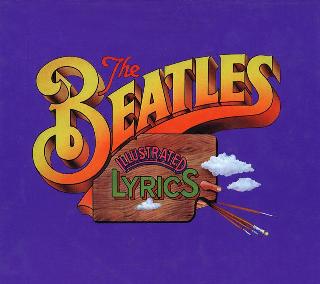Index
Home
Vorige
Revolution 1
Composer(s) : Lennon and McCartney
Year : 1968
Chords/Tabs: Revolution 1
Notes on "Revolution" and "Revolution 1" (R)
KEY B Major
METER 4/4
FORM Intro -> Verse -> Refrain ->
Verse -> Refrain -> Break (instrumental) ->
Verse -> Refrain -> Outro (w/complete ending)
GENERAL POINTS OF INTEREST
Style and Form
- Lewisohn tells us that "Revolution 1" (the album cut) retains
chronological primacy over the so-called remake version which
appears on the B-side of the "Hey Jude"
single. That's fine
by me, though I have a very tough time thinking of "Revolution"
(the single) as anything but the "true" version of the song, and
the album cut as not just a remake, but a veritable parody of
the single version. For my money, the madman-on-a-street-corner
raving of the single resonates more sympathetically with the
sense of the lyrics than the night-club-cool-and-brassy
treatment of the album cut.
- I don't think there's necessarily a "conflict" here that needs
resolution (the latter, being yet another one of those words that
the rhyming dictionary says go with the title :-)). Perhaps, for
example, John didn't connect with his true inner feelings about the
song until it was "re-made." Didn't that ever happen to you with
anything?
- In any event, while some years ago I might have planned to cover
these two tracks in separate articles of their own, I now feel that
they not only need to be discussed together, but, again I assert --
the album cut needs to be understood as the "variant" in appostion
to the "Ur" version on the single.
- We're treated to some ultra-stylized blues here; nothing about it
conforms strictly to the orthodox 12-bar form, though there's more
than an adequate presence of secondary sexual characteristics (many of
the chord choices and the bent notes in the melody) to establish
the pheramonial aura of the genre.
- The form is equally subtle; with a verse that can arguably be
parsed as a verse-bridge combination, and an instrumental break
in a form not used elsewhere in the piece; look to Paulie's
much earlier "She's A Woman,"
(another stylized blues track -- quelle suprise!) for an intruiguing
precedent.
- The lyrics get pounced on typically because of what the FBI might
have described as their "anarchic" posture. What I find most
remarkable about them is the way they embody that typically
Lennonesque ambiguity between tender encouragement and nasty
ridicule. Add this one to the list of titles that includes
"And Your Bird Can Sing,"
"Baby You're A Rich Man," and
"Hey Bulldog."
I mean, is there anyone out there who really believes, after listening
to this song, that "it" (whatever the hell it is) is going to be
"all right"?
Melody and Harmony
- With the exception of an extroardinary out-on-a-limb gesture
reiterated at the end of each verse, the harmonic vocabulary is
almost entirely the routine in-out of I-IV-V.
- The tune alternates between an outstretched arch and rhetorical
chatting, and in both cases leans in the direction of John's much
favored pentatonic style.
- The accompaniment in the verse features a recurring 5-6-5 motif in
the inner voice just above the basslines. Yes, on one level you
might say this implies the I chord vacillating with IV in the 6/4 second
inversion, but at the higher, structural level, get used to seeing (and
more importantly, *hearing*) it as a simple neighbor tone, albeit one
appointed with deluxe accomodations.
Arrangement
- It's difficult to think of another Beatles track that seeks what
we now-a-days call the "grunge" aesthetic with a gusto equal to
the subject of our present study. I could elaborate on this
quite a bit, but I'd be berating the obvious.
- While the overloaded sound of the guitars and drums are what
you may sonically notice the most , the dubbing of the lead vocal
is given even stranger treatment; mostly alternating between plain single
track and "automatic" double tracking, but punctuated by scattered
bites of triple tracking that are too awkward and sloppily edited to
have happened anyway other than on by accident-on-purpose.
SECTION-BY-SECTION WALKTHROUGH
Intro
- The intro is only four measures long but its manic guitar triplets
manage to efficiently set the tone for what is to follow:
|B |- |- |E F# |
I IV V
- We have lead/rhythm guitars at the start with the drum kit added on
the downbeat to measure 3 and some screaming just before the downbeat
to measure 4. The chord changes I've pencilled in in the final measure
of more implied than explicit.
Verse
- The verse uses limping, uneven phrases in a pattern of ABAB'CC'.
We have not just phrases of different lengths here, but also
examples of half measures thrown in the mix, all the better to
keep you off your guard:
- half-
|B |- |- |
I
|E |- |B |- |
IV I
- half-
|B |- |- |
I
|E |- |F# |- |
IV V
|c# |F# |
ii6/4 V
- half-
|c# |A B |G# |F# |
ii6/4 VI V
c#: i VI
flat-VII V
- The harmony is straight I-IV-V except for that blip in the final
phrase which, by no coincidence, corresponds to the metrically most
surprising instant in the piece as well; its the only place where a
half-measure comes in the *middle* of a phrase rather than the end,
plus the chords are heavily syncopated against the beat.
Harmonically, you might say we have an unconsumated modulation to
the key of ii, and that you retrospectively interpet it as a
non-sequitor at least, and at most, a somewhat forced, strained pivot.
Either gesture fits nicely with the mood of the message.
Refrain
- As the unwritten rule of balancing contrast would demand, the
refrain provides much straighter phrasing and harmonic structure;
an eight measure section with an even-phrased AAA+rest structure
and very simple chord choices.
|B |E |B |E |
I IV I IV
|B |E |F# |- |
I IV V
Break
- The guitar solo section starts off with what turns out to be
an abridged reprise of the verse (at least the half-measure in the
first phrase is preserved!), but then precedes in its second half
to an orgamsic build up of 4 measures on the V chord:
- half-
|B |- |- |
I
|E |- |
IV
|F# |- |- |- |
V
Outro
- The outro grows directly out of the final refrain, boiling down
the lyrics of the latter to a mantra-like repetition of "all
right" with increasing urgency; the last pair of which nicely
start rushing the meter, big time.
|B |E |B |E |
I IV I IV
|B |E |F# |B |
I IV V I
- I could be wrong, but this may be the first time since the likes
of "No Reply"
that we have a Beatles song ending with a jazzy
I chord embellished with a Major 9th and an added 6th.
SOME FINAL THOUGHTS
- And the differences in the "Revolutions #1" album version besides
the infamous added affirmative in the lyrics of the first verse
are (the envelope, please):
- slower tempo and a more laid back mood,
- lower key (A Major),
- cleaner recording,
- brass on the backing track,
- backing vocals (singing "shoo-be doo-wop," no less!),
- no break section, and
- a fadeout ending
Otherwise, the two versions are identical :-)
Regards,
Alan (awp@world.std.com)
---
"Up the workers and all that stuff." 033097#129
---
Copyright (c) 1995 by Alan W. Pollack
All Rights Reserved
This article may be reproduced, retransmitted, redistributed and
otherwise propagated at will, provided that this notice remains
intact and in place.
Ook op The Beatles [White Album]:
(c) 2024 Serge Girard


 (c) Alan Aldrigde, The Beatles Illustrated Lyrics
(c) Alan Aldrigde, The Beatles Illustrated Lyrics